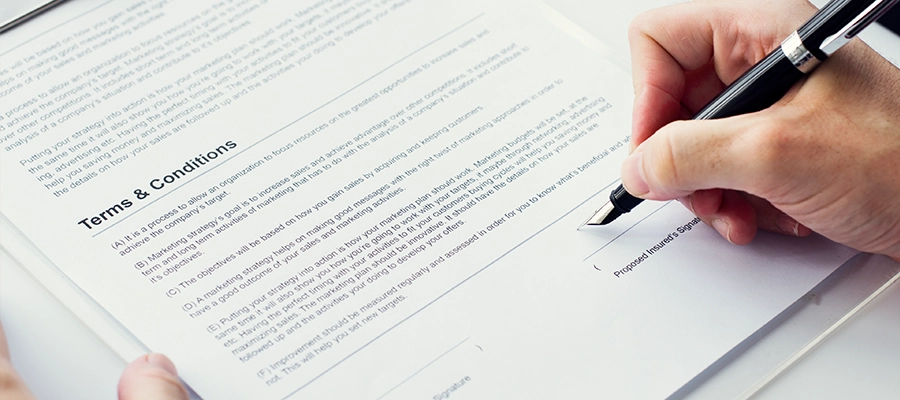Quick Summary
A Management Information System (MIS) report is a structured tool that compiles data from various business operations to support informed decision-making. These reports offer insights into key performance indicators, financial metrics, and operational statistics, enabling managers to assess performance and identify areas for improvement. Common types of MIS reports include sales summaries, financial statements, and inventory analyses. Implementing MIS reports enhances organizational efficiency by providing timely and accurate information, facilitating strategic planning, and promoting effective communication across departments. For businesses aiming to optimize operations, understanding and utilizing MIS reports is essential.
Blog Content Overview
- 1 Understanding MIS Reports
- 2 What Is an MIS Report?
- 3 Features of an MIS Report
- 4 Importance of MIS Reports in Business
- 5 Types of MIS Reports
- 6 How MIS Reports Work
- 7 Legal Requirements for MIS Reports in India
- 8 How to Prepare an MIS Report? – Steps
- 9 Industry-Specific Examples of MIS Reports
- 10 MIS Reports for Different Management Levels
- 11 Conclusion
- 12 Frequently Asked Questions (FAQs) on MIS Reports:
Understanding MIS Reports
In today’s fast-paced business world, data is king. But raw data alone isn’t enough — organizations need a way to utilize that data as actionable insights. This is where Management Information System reports (MIS reports) come into play. These essential tools aggregate data from various departments and present it in a clear, concise format, empowering management to make informed decisions that drive success.
MIS reports are a critical tool in any company or investor’s belt to gather, process and present data that supports decision making and compliance. They provide structured insights into areas such as finance, operations, compliance and human resource management, and help monitor performance, identify trends and ensure adherence to statutory obligations. MIS reports are typically presented to the management team and are also often requested by investors to keep tabs on the company’s performance (and by extension their investment). These reports focus on raw data, trends, patterns within datasets, and relevant comparisons and consequently, enable the core team to make informed decisions, capitalize on current market trends, monitor progress and business management.
What Is an MIS Report?
A Management Information System (MIS) report is a data-driven document used by organizations to track and manage their operations. It consolidates information from various departments, such as finance, sales, inventory, and operations, to provide key insights for decision-making. MIS reports help managers monitor performance, identify trends, and make data-backed decisions that drive business efficiency and growth.
Key Characteristics of MIS Reports
- Data Aggregation
MIS reports collect and combine data from multiple sources across an organization, such as sales figures, financial statements, and operational metrics. This aggregation ensures that management has a comprehensive view of the business at any given time. - Timeliness and Frequency
To be effective, MIS reports are generated at regular intervals — daily, weekly, monthly, or quarterly. The timeliness of these reports ensures that decision-makers have up-to-date information to act on quickly, improving the responsiveness and agility of the organization. - Customization for Different Management Levels
MIS reports can be tailored to suit various levels of management. For example, executives may receive high-level summary reports with key performance indicators (KPIs), while department managers may need more detailed, operational data to optimize day-to-day functions. - Analysis and Interpretation
Beyond raw data, MIS reports offer analysis and interpretation to identify patterns, trends, and potential issues. This analysis helps managers not only understand what is happening within the organization but also why it’s happening and what actions need to be taken. - Historical Data and Trends
Historical data is often included in MIS reports to allow for performance comparison over time. By analyzing trends, businesses can identify growth patterns, track goal progress, and forecast future performance, helping them plan more effectively. - Visual Representation
Effective MIS reports use visual elements like graphs, charts, and tables to present complex data in an easily digestible format. These visuals help management quickly interpret key insights, making the decision-making process more efficient and accessible.
Features of an MIS Report
MIS Reports are designed with several interconnected components that work synergistically to provide valuable insights for informed decision-making. These reports go beyond mere data presentation, offering a structured approach to information management.
Key Components of an MIS Report
A robust MIS report is built upon a foundation of critical components, each playing a vital role in its effectiveness and utility. Understanding these elements is crucial for leveraging the full power of an MIS system.
- Users: At the heart of any MIS report are its users, encompassing a wide range of stakeholders within and outside the organization. This includes company employees, line managers, senior executives, investors, and even individuals who indirectly interact with the organization (e.g., auditors, regulatory bodies). The report’s design and content must cater to the specific informational needs and decision-making levels of these diverse user groups.
- Data: The lifeblood of an MIS report is the data it processes. This data is meticulously collected from various internal and external sources across an organization. It can range from financial transactions and sales figures to operational metrics, customer interactions, and market trends. High-quality, accurate, and relevant data is paramount for generating reliable insights, supporting critical business decisions, facilitating marketing analysis, and enabling accurate target predictions.
- Business Procedures: These are the clearly defined methodologies and workflows that govern how data is systematically collected, rigorously analyzed, securely stored, and efficiently disseminated within the organization. Business procedures outline the step-by-step implementation of company policies related to information management, ensuring consistency, compliance, and data integrity. They define the rules and processes that transform raw data into actionable information.
- Software & Hardware: The technological infrastructure underpinning an MIS report is crucial for its functionality. This component encompasses the programs, applications, and physical equipment used to process, store, manage, and present data. Examples include sophisticated database management systems (DBMS) for organizing vast amounts of information, advanced data visualization tools for presenting complex data in an understandable format (e.g., dashboards, charts), spreadsheets for ad-hoc analysis, enterprise resource planning (ERP) systems, customer relationship management (CRM) software, and the servers and networks that support these applications. The right combination of software and hardware ensures efficient data handling and report generation.
- Output/Reports: This refers to the final product of the MIS, which are the reports themselves. These can take various forms, including periodic reports (e.g., daily, weekly, monthly sales reports), on-demand reports, summary reports, detailed reports, comparative reports, and exception reports. The output should be tailored to the specific needs of the users, providing clear, concise, and actionable information in an easily digestible format, often incorporating visual elements for enhanced understanding. The quality and relevance of the output directly determine the value derived from the MIS.
Importance of MIS Reports in Business
MIS reports are indispensable for businesses aiming to stay competitive and make informed decisions. These reports provide actionable insights by consolidating data from various sources, making them a cornerstone of decision-making and strategic planning.
How MIS Reports Support Businesses:
- Data-Driven Decision-Making: MIS reports deliver real-time, accurate data, enabling leaders to make informed choices quickly.
- Strategic Planning: They highlight trends and patterns, helping businesses forecast and strategize for long-term goals.
Key Benefits of MIS Reports:
MIS Reports are invaluable for businesses, offering numerous advantages that enhance efficiency, decision-making, and overall performance. Here are the key benefits explained with real-world examples:
- Informed Decision-Making
- MIS reports provide real-time, accurate data to help management make well-informed decisions.
- Example: A retail chain uses daily sales reports to adjust inventory based on store performance.
- Cost Control
- By monitoring financial data, businesses can identify areas of overspending and make adjustments.
- Example: A manufacturing company uses expense tracking reports to negotiate better contracts with suppliers, reducing costs.
- Performance Monitoring
- MIS reports track departmental and individual performance, helping businesses stay aligned with goals.
- Example: A sales team reviews quarterly performance reports to identify gaps between target and actual revenue.
- Transparency and Accountability
- Clear data visualizations in MIS reports foster accountability and transparency across teams.
- Example: A tech startup uses team dashboards to track project progress, ensuring all deadlines are met.
- Strategic Planning
- MIS reports provide valuable historical data for creating future strategies and business plans.
- Example: A financial services firm analyzes customer data from past years to design a marketing strategy for the upcoming quarter.
- Resource Optimization
- By identifying underutilized resources, businesses can allocate them more effectively.
- Example: A logistics company uses fleet reports to optimize driver schedules and reduce fuel consumption.
- Risk Management
- MIS reports help businesses proactively identify and address potential risks.
- Example: A bank uses risk reports to adjust lending policies and mitigate credit defaults.
- Improved Customer Insights
- MIS reports offer deep insights into customer behavior, helping businesses tailor their offerings.
- Example: An e-commerce store uses customer data to personalize product recommendations and increase sales.
- Regulatory Compliance
- MIS reports ensure businesses comply with industry regulations and standards.
- Example: A pharmaceutical company generates compliance reports to demonstrate adherence to health and safety regulations.
By integrating MIS reports into daily operations, businesses gain clarity, improve decision-making, and achieve strategic alignment with their objectives.
Types of MIS Reports
MIS reports are tailored to a business’s specific needs, offering valuable insights through various data aggregation methods. Below are the most commonly used types of MIS reports, optimized to suit diverse organizational requirements:
1. Summary Reports
- Provide a high-level overview of business performance.
- Focus on aggregated data across business units, products, or customer demographics.
- Example: Monthly sales summaries comparing revenue across regions or product categories.
2. Trend Reports
- Highlight patterns and trends over time.
- Ideal for tracking performance, comparing product sales, or analyzing customer behavior.
- Example: Year-over-year growth trends for a specific product line.
3. Exception Reports
- Focus on identifying anomalies or unusual circumstances in operations.
- Useful for detecting inefficiencies, fraud, or compliance issues.
- Example: Highlighting delayed shipments or expenses exceeding predefined limits.
4. On-Demand Reports
- Created based on specific management requests.
- Flexible in format and content to address urgent queries or decisions.
- Example: A custom report on the impact of a marketing campaign on quarterly sales.
5. Financial and Inventory Reports
- Provide detailed insights into an organization’s financial health and inventory management.
- Include balance sheets, income statements, cash flow analysis, inventory turnover, and budget utilization.
- Example: A report tracking inventory levels against seasonal sales forecasts.
6. Cash and Fund Flow Statements
- Analyze cash inflows and outflows to maintain liquidity.
- Include fund flow insights, helping management track the sources and utilization of funds.
- Example: Monthly cash flow analysis to ensure sufficient working capital.
7. Operational Reports
- Focus on the day-to-day functioning of the organization.
- Cover metrics such as production efficiency, employee performance, and customer service statistics.
- Example: Daily production output compared to targets, MNREGA MIS Report.
8. Comparative Reports
- Compare performance metrics across different time periods, departments, or products.
- Useful for assessing changes and making strategic adjustments.
- Example: Quarterly sales performance of two newly launched products.
9. KPI Reports
- Track key performance indicators specific to organizational goals.
- Help management focus on metrics critical to success.
- Example: Monthly customer acquisition cost (CAC) and lifetime value (LTV) reports.
MIS reports, when used effectively, provide actionable insights that empower businesses to enhance decision-making, optimize processes, and drive growth. By leveraging these diverse report types, organizations can stay ahead in today’s competitive landscape.
How MIS Reports Work
MIS reports streamline business operations by turning raw data into actionable insights. Here’s a step-by-step breakdown of how they work:
1. Data Collection
- Gather data from various sources, including databases, ERP systems, and spreadsheets.
- Sources can include financial transactions, sales records, and inventory logs.
2. Data Processing
- Clean and organize raw data to ensure accuracy and consistency.
- Standardize formats and remove duplicates or errors.
3. Data Analysis
- Identify trends, patterns, and outliers through advanced analytics.
- Generate Key Performance Indicators (KPIs) aligned with business goals.
4. Report Design and Presentation
- Create clear, visually engaging reports using tables, graphs, and charts.
- Tailor reports to the audience, such as executive summaries for management and detailed reports for operational teams.
5. Decision-Making
- Deliver insights to stakeholders for informed decision-making.
- Use findings to optimize strategies, allocate resources, and mitigate risks.
Role of Technology and Automation
- Automation: Tools like ERP systems and business intelligence software automate data collection, processing, and report generation, reducing manual effort and errors.
- Visualization: Dashboards and AI-powered analytics make complex data easily understandable.
- Real-Time Insights: Cloud-based MIS systems enable real-time reporting, ensuring timely decisions.
Legal Requirements for MIS Reports in India
Although no Indian legislation directly mandates the preparation of MIS reports, they are indispensable for compliance with several Indian regulations:
- Corporate Governance and Financial Reporting: The Companies Act, 2013 requires companies to maintain accurate records and prepare financial statements under Sections 128 and 129, a statutory requirement that can be facilitated through consolidated data provided by MIS reports. Listed companies are additionally required to comply with the regulations prescribed by the Securities and Exchange Board of India (“SEBI”), a process that is made easier with MIS Report for monitoring and reporting performance.
- Taxation Compliance: MIS reports are crucial for maintaining transaction details, reconciling input tax credit, and filing periodic Goods and Service Tax returns. They ensure accuracy and reduce the risk of non-compliance and also help maintain the detailed financial records required in tax assessments and audits, aiding in transparency and compliance.
- Reserve Bank of India (RBI) Guidelines: For banking and financial institutions, the RBI regulations including reporting on Non-Performing Assets (NPAs), credit exposure, and risk metrics, require MIS Reports to achieve the risk-based supervision model with robust reporting.
- Labour and Employment Regulations: Record maintenance and reporting on a routine basis is a critical compliance prescribed by many labor legislations, including for Employee Provident Fund and Employee State Insurance contributions. Many of the statutorily prescribed formats typically involve the same data aggregating in an MIS Report pertaining to human resource management.
- Environmental Compliances: Industries must monitor and report on environmental parameters such as emissions and waste management, which can be efficiently managed through MIS reports.
How to Prepare an MIS Report? – Steps
| Step | Description | Tools & Suggestions |
| 1. Define Objectives | Clearly identify the report’s purpose and the specific metrics it should address. | Create a checklist of objectives, e.g., “Track sales by region” or “Monitor inventory levels.” |
| 2. Gather Data | Collect accurate and relevant data from sources such as ERP systems, CRM platforms, and spreadsheets. | Use tools like Google Sheets, Excel, or SQL databases to consolidate data. |
| 3. Process & Organize | Cleanse and standardize data by removing errors or inconsistencies. Aggregate data to align with reporting needs. | Use Excel Power Query, data validation tools, or cleaning scripts in Python for automation. |
| 4. Analyze Data | Evaluate data for patterns, trends, and insights. Generate key metrics or KPIs aligned with business goals. | Leverage tools like Tableau, Power BI, or Google Data Studio for interactive data visualizations and dashboards. |
| 5. Design Report | Structure the report with a clear layout, including visual aids like graphs, tables, and charts to enhance readability. | Use pre-made templates in Excel, PowerPoint (mis report in excel), or reporting tools for a professional and consistent format. |
| 6. Automate Reports | Automate recurring reports to save time and ensure consistency in reporting. | Tools like Microsoft Power Automate, Zoho Analytics, or Google Apps Scripts can handle automation. |
| 7. Review & Validate | Verify data accuracy and ensure the report aligns with stakeholder expectations. | Share drafts with teams for feedback before finalizing. |
| 8. Share the Report | Distribute the report via email, cloud platforms, or dashboards. Ensure sensitive data is secured with proper access controls. | Platforms like Google Drive, OneDrive, or specialized reporting dashboards allow real-time sharing and collaboration. |
Top Tools & Templates for MIS Reporting
| Category | Recommended Tools | Purpose |
| Data Collection | ERP systems, CRM tools, Google Sheets, Excel | Consolidate raw data from multiple sources. |
| Data Analysis | Tableau, Power BI, Google Data Studio, Excel charts | Identify trends, generate KPIs, and visualize data for actionable insights. |
| Automation | Microsoft Power Automate, Python, Zoho Analytics | Automate repetitive tasks like data processing and report generation. |
| Templates | Pre-built templates in Excel, Google Sheets | Use ready-made layouts for financial reports, sales tracking, and performance summaries. |
Industry-Specific Examples of MIS Reports
MIS reports are not one-size-fits-all. Their design and content are heavily influenced by the specific industry and unique challenges faced by organizations within that sector. Here are some examples of how MIS reports are tailored across different industries:
- Manufacturing:
- Production Efficiency Reports: Track output per shift, machine downtime, and defect rates to optimize manufacturing processes.
- Inventory Management Reports: Monitor raw material levels, work-in-progress, and finished goods to prevent stockouts and minimize carrying costs.
- Quality Control Reports: Analyze defect rates, failure analysis, and customer returns to improve product quality and reduce warranty claims.
- Retail:
- Sales Performance by Store/Region: Compare sales figures, average transaction value, and customer traffic across different locations.
- Inventory Turnover by Product Category: Track how quickly different product lines are selling to optimize stock levels and prevent obsolescence.
- Customer Segmentation Reports: Analyze customer demographics, purchase history, and loyalty program data to personalize marketing efforts.
- Healthcare:
- Patient Admission and Discharge Reports: Track patient flow, average length of stay, and bed occupancy rates to optimize resource allocation.
- Treatment Outcome Reports: Analyze the effectiveness of different treatments, patient recovery rates, and readmission rates to improve patient care.
- Insurance Claims Processing Reports: Monitor claim submission rates, approval rates, and processing times to improve efficiency and reduce fraud.
- Finance:
- Portfolio Performance Reports: Track the returns, risk, and diversification of investment portfolios.
- Loan Origination and Default Reports: Monitor loan application rates, approval rates, and default rates to manage credit risk.
- Fraud Detection Reports: Identify suspicious transactions and patterns to prevent financial crimes.
- Logistics and Transportation:
- Delivery Time and Efficiency Reports: Track on-time delivery rates, fuel consumption, and route optimization to improve efficiency.
- Warehouse Management Reports: Monitor inventory levels, storage costs, and order fulfillment rates to optimize warehouse operations.
- Fleet Maintenance Reports: Track vehicle maintenance schedules, repair costs, and downtime to minimize disruptions.
MIS Reports for Different Management Levels
The level of detail and focus of an MIS report changes significantly depending on the management level it is designed for. Here is a breakdown for a CEO, Manager, and Team Lead:
- CEO (Executive Level)
- Focus: A strategic overview, long-term trends, and the overall performance of the organization.
- Report Types: This level typically uses summary reports, trend reports, KPI reports, and high-level financial statements.
- Example: A quarterly report summarizing the company’s overall revenue, profitability, market share, and key strategic initiatives.
- Manager (Senior and Middle Management)
- Focus: Departmental performance , strategic initiatives , resource allocation , operational efficiency, and short-term trends.
- Report Types: Managers utilize a range of reports including trend reports, comparative reports , budget vs. actual reports , exception reports, and on-demand operational reports.
- Example: A monthly report comparing the sales performance of different product lines across various regions or a weekly report that tracks the production output of a plant and highlights any deviations from set targets.
- Team Lead (Operational Level)
- Focus: Day-to-day tasks, the performance of individuals on the team, and immediate issues that need attention.
- Report Types: Team Leads rely on detailed operational reports and real-time dashboards.
Example: A daily report that tracks the number of customer service calls handled by each agent and shows their average time to resolution.
Conclusion
MIS reports are indispensable tools for modern businesses, providing structured insights into finance, operations, compliance, and human resource management. By consolidating and analyzing data, these reports empower management teams and investors to make informed decisions, monitor performance, and stay compliant with statutory requirements. Although not explicitly mandated under Indian law, MIS reports play a vital role in meeting corporate governance, taxation, labor, and environmental compliance obligations, making them an essential component of effective business management.
Frequently Asked Questions (FAQs) on MIS Reports:
1. What is an MIS report, and why is it important?
An MIS report is a structured document that compiles, analyzes, and presents business data to aid in decision-making and compliance. It helps monitor performance, identify trends, and ensure adherence to regulatory requirements.
2. How are MIS reports different from raw data?
Raw data consists of unprocessed numbers and facts, while MIS reports organize and analyze this data into structured insights. MIS reports identify trends, patterns, and comparisons, providing a comprehensive view that aids decision-making. They also incorporate visual aids like graphs and tables for better interpretation.
3. What are the key types of MIS reports?
MIS reports include summary reports, trend reports, exception reports, financial and inventory reports, on-demand reports, and cash and fund flow statements, each serving specific business insights and requirements.
4. Are MIS reports legally required in India?
While Indian laws like the Companies Act, GST regulations, and RBI guidelines do not directly mandate MIS reports, they are often necessary for compliance with corporate governance, taxation, and financial reporting standards.
5. How do MIS reports support compliance with Indian laws?
MIS reports consolidate data for preparing financial statements, filing GST returns, tracking employee contributions under labor laws, and monitoring environmental parameters, ensuring compliance with multiple statutory requirements.
5. What components are included in an MIS report?
An MIS report typically includes data (from varied organizational sources), business procedures (for analysis and storage), software (like spreadsheets and databases), and insights for users such as employees, managers, and investors.
6. How can MIS reports benefit investors?
MIS reports keep investors informed about a company’s performance by providing insights into financial health, operational trends, and risk metrics, enabling them to monitor the security and growth of their investments.
7. What role does technology play in MIS reporting?
Technology streamlines MIS reporting through:
- Automation: Tools like ERP systems and Power Automate reduce manual effort.
- Visualization: Platforms like Tableau and Google Data Studio provide interactive dashboards.
- Real-Time Insights: Cloud-based systems enable instant access to updated reports.
8. What tools are commonly used for MIS reporting?
Common tools include:
- Data Collection: Google Sheets, Excel, ERP systems.
- Analysis: Tableau, Power BI, Google Data Studio.
- Automation: Zoho Analytics, Python scripts, Microsoft Power Automate.
We Are Problem Solvers. And Take Accountability.
Related Posts


Compliance Calendar – July 2025 (Checklist & Deadlines)
Sync with Google CalendarSync with Apple Calendar As we enter the second half of 2025, staying compliant with various financial,...
Learn More

Conversion of Partnership Firm to LLP – Complete Process
Converting a Partnership Firm to a Limited Liability Partnership (LLP) is a strategic decision that offers several advantages for businesses...
Learn More

Memorandum of Association – MoA Clauses, Format & Types
The Memorandum of Association (MOA) is one of the most essential documents in the company incorporation process, forming the foundation...
Learn More











